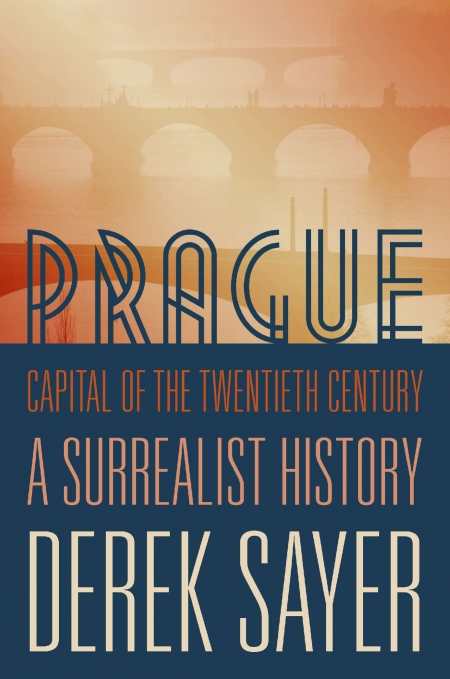Prague: Capital of the Twentieth Century
A Surrealist History
Prague’s surrealist legacy, forgotten amid twentieth century totalitarianism, is revived and detailed in an impressive narrative.
Prague: Capital of the Twentieth Century opens as the French surrealists Andre Breton and Paul Éluard arrived in Prague in 1935. The city enthusiastically welcomed the pair, and Breton dubbed Prague “the Magical Capital.” Three years later a group of Czech surrealists traveled to Paris, but by that time current events in Europe had driven irreparable fissures between friends and dogmas. And a year later, the Nazis would invade Prague.
Walter Benjamin, German essayist, called Paris the capital of the nineteenth century, and in this book, Derek Sayer claims Prague is the twentieth century heir to that title. During the last century, Prague was part of the Austro-Hungarian Empire, the most eastern democracy in Europe, a Nazi protectorate, a Soviet satellite, and a post-communist republic. It was host to a vibrant art scene, largely forgotten because of Cold War politics, as well as ethnic cleansing and the Holocaust. Most important, according to the author, it was the place where modernist dreams repeatedly unraveled.
Sayer has written a cultural history chockablock with artists, modernist architecture, manifestos, dark comedies, and broken alliances. He focuses on the details, claiming he is “not interested in the grand narratives that discipline so much as the details that derail” and suggests that a study of surrealism provides the basis for understanding today’s post-modernism. While the focus starts with Czech artists, he extends his view to the lives and work of artists throughout Europe, concentrating on the period between the outbreak of World War I in 1914 and the collapse of the Soviet Union in 1991.
At times it’s too much. The book’s encyclopedic range and commitment to detail—at the expense of narrative—can be overwhelming. Sayer seems unable to help throwing in multiple examples at every turn. But the scholarship is impressive, the illustrations fascinating, and, despite the denseness of the material, the style is conversational. Besides, we were warned: for Sayer, the details are the point. This is neither a book for the tourists crowding Prague’s medieval Old Town or for those understanding art through blockbuster museum retrospectives. It will be valued by those interested in European cultural history during the twentieth century and how modern art was colored by the horrors of the political landscape.
Derek Sayer is a professor of cultural history at the University of Lancaster and professor emeritus at the University of Alberta. His previous books include The Coasts of Bohemia: A Czech History and Capitalism and Modernity.
Reviewed by
Karen Ackland
Disclosure: This article is not an endorsement, but a review. The publisher of this book provided free copies of the book to have their book reviewed by a professional reviewer. No fee was paid by the publisher for this review. Foreword Reviews only recommends books that we love. Foreword Magazine, Inc. is disclosing this in accordance with the Federal Trade Commission’s 16 CFR, Part 255.

